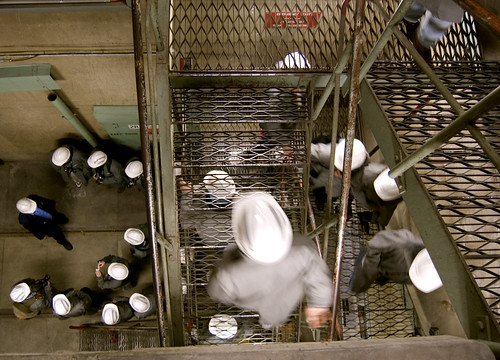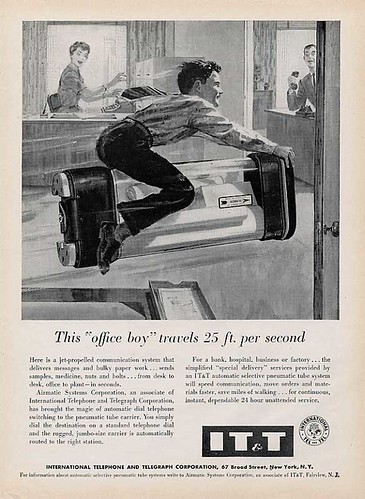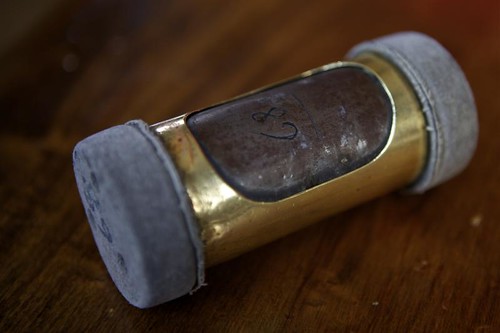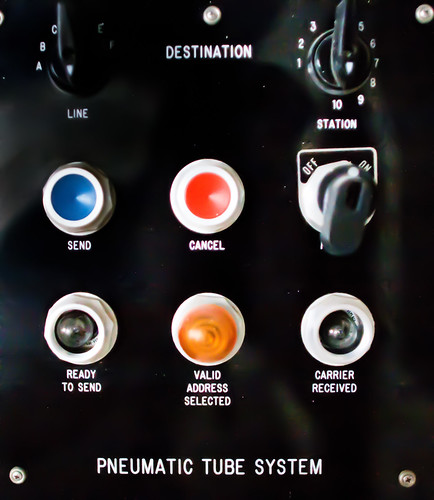
Pneumatic tubes have been the subject of one or two chat forums, and some fantastic blog posts. On the
'In the Public Domain' chat forum, there is a conversation about Stanford Hospital's network, tubes at Denver International airport and some links to YouTube videos. Conversation drifts into science fiction fantasy and high-tech imaginings.
The wonderful
Web Urbanist provides extensive coverage on the tubes. The Web Urbanist post has details of Alfred Beach's 19th century pneumatic subway, cash railways, postal systems, steampunk aesthetics and novel uses of the technology in watch stores and coffee houses. The post mentions hospitals too:
When moving small packages quickly from one place to another within a self-contained area, pneumatic tube systems can’t be beat. Indeed, modern tube networks are installed in new hospitals, older systems are added to and original systems just keep on ticking along, as they have very few moving parts to wear out. Hospitals are ideal locations for tube systems; they move medical samples from one area to another quickly – and in hospitals, speed can save lives.
And finally, for today's post, there is Curious Expedition's
Pneu York, Pneu York, which has snippets about a cat flying through the New York postal network and stories of how employees of the Waldorf-Astoria used their system for gossip. The post describes how many of New York's pneumatic tube systems were dismantled in the 20th century, except for the NY Humanities and Social Sciences library, where book requests are sent down to the stacks, seven floors below the ground, via pneumatics, with the books then appearing on an oval ferris wheel. Finally, there is the tale of pneumatic tube system vs bicycle in Prague:
“We had a race once between us, a bicycle courier, and a dispatch van to see who could get an identical parcel to [Czech President Vaclav] Havel up at the castle,” recalls Jiri Lilling, one of nine engineers who maintain the pneumatic network. “It was rush hour, so the van took an hour. The bicycle took 25 minutes. But our parcel was there in 4 minutes.”
Image via Curious Expeditions.













